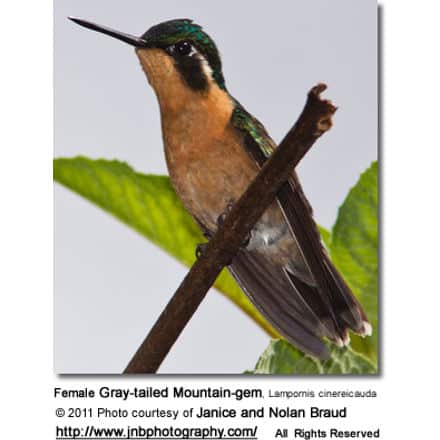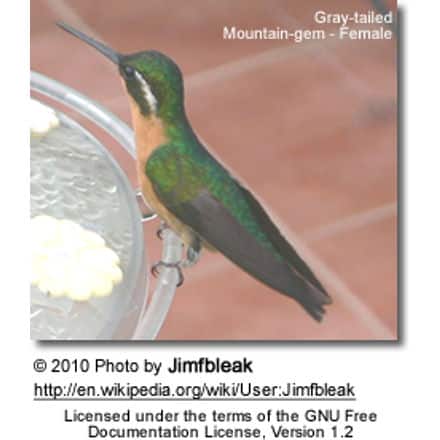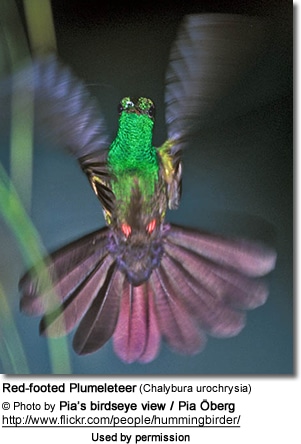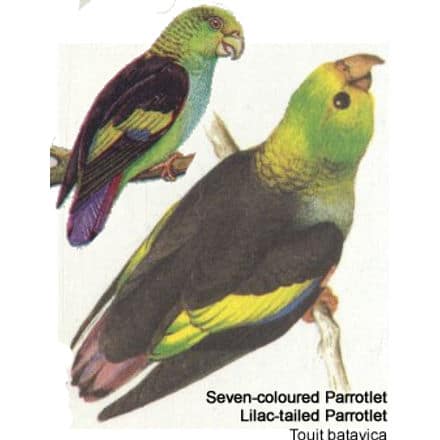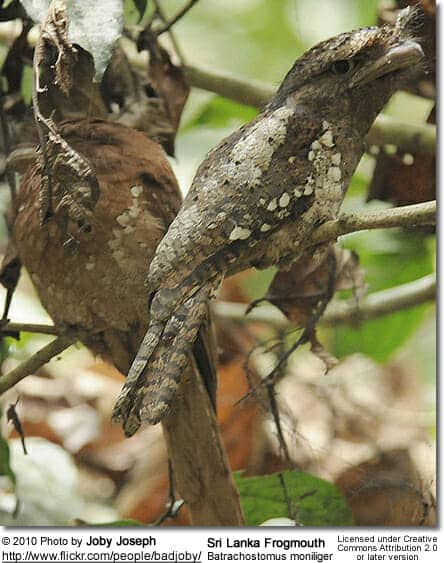Grey-tailed Mountain-gem
Grey-tailed Mountain-gem
Hummingbird Information
The Grey-tailed Mountain-gem (Lampornis cinereicauda) is a Central American hummingbird which breeds only in the mountains of southern Costa Rica (Cordillera de Talamanca).
They inhabit forested areas in hilly terrain – at altitudes from 1850 m (~6,000 ft) to the timberline in the Talamanca range.
Alternate (Global) Names
Spanish: Colibrí montañés coligrís, Gema de Cola Gris … French: Colibri à queue grise … Italian: Gemma di montagna codagrigia, Orogemma codagrigia … Czech: Kolibrík šedoocasý … Danish: Gråhalet Bjergjuvel … German: Grauschwanznymphe, Grauschwanz-Nymphe … Finnish: Tuhkapyrstökolibri … Japanese: haioshiromejirihachidori, nodojiroshiromejirihachidori … Latin: Lampornis castaneoventris cinereicauda, Lampornis cinereicauda … Dutch: Grijsstaartjuweelkolibrie, Grijsstaart-juweelkolibrie … Norwegian: Gråhalejuvel … Polish: malachicik szarosterny … Slovak: medovec sivochvostý … Swedish: Gråstjärtad bergsjuvel
Description:
The Grey-tailed Mountain-gem averages 10.5 cm (~ 4 inches) in length. The male is slightly larger – weighing about 6.2 g (0.22 oz), the female about 5 g (0.18 oz). Their shortish black bill is slightly curved.
The adult male’s upper plumage is bronze-green; as is most of his under plumage – except for his brilliant green crown, pure white throat and grey tail.
The adult female lacks the bright crown and throat, and her underplumage is a rich cinnamon color.
Young birds resemble the females, but have buff fringes to the upper plumage.
Nesting / Breeding
Hummingbirds are solitary in all aspects of life other than breeding; and the male’s only involvement in the reproductive process is the actual mating with the female. They neither live nor migrate in flocks; and there is no pair bond for this species. Males court females by flying in a u-shaped pattern in front of them. He will separate from the female immediately after copulation. One male may mate with several females. In all likelihood, the female will also mate with several males. The males do not participate in choosing the nest location, building the nest or raising the chicks.
The female Gray-tailed Mountain-gem is responsible for building the cup-shaped nest out of plant fibers woven together and green moss on the outside for camouflage in a protected location in a shrub, bush or tree – usually about 1-3 m high in a tree or scrub. She lines the nest with soft plant fibers, animal hair and feather down, and strengthens the structure with spider webbing and other sticky material, giving it an elastic quality to allow it to stretch to double its size as the chicks grow and need more room. The nest is typically found on a low, thin horizontal branch.
The average clutch consists of two white eggs, which she incubates alone for about 15 – 19 days, while the male defends his territory and the flowers he feeds on. The young are born blind, immobile and without any down.
The female alone protects and feeds the chicks with regurgitated food (mostly partially-digested insects since nectar is an insufficient source of protein for the growing chicks). The female pushes the food down the chicks’ throats with her long bill directly into their stomachs.
As is the case with other hummingbird species, the chicks are brooded only the first week or two, and left alone even on cooler nights after about 12 days – probably due to the small nest size. The chicks leave the nest when they are about 20 – 26 days old.
Diet / Feeding
The Gray-tailed Mountain-gem Hummingbirds primarily feed on nectar taken from a variety of brightly colored, scented small flowers of trees, herbs, shrubs and epiphytes. They favor flowers with the highest sugar content (often red-colored and tubular-shaped) and seek out, and aggressively protect, those areas containing flowers with high energy nectar. They use their long, extendible, straw-like tongues to retrieve the nectar while hovering with their tails cocked upward as they are licking at the nectar up to 13 times per second. Sometimes they may be seen hanging on the flower while feeding.
Many native and cultivated plants on whose flowers these birds feed heavily rely on them for pollination. The mostly tubular-shaped flowers actually exclude most bees and butterflies from feeding on them and, subsequently, from pollinating the plants.
They may also visit local hummingbird feeders for some sugar water, or drink out of bird baths or water fountains where they will either hover and sip water as it runs over the edge; or they will perch on the edge and drink – like all the other birds; however, they only remain still for a short moment.
They also take some small spiders and insects – important sources of protein particularly needed during the breeding season to ensure the proper development of their young. Insects are often caught in flight (hawking); snatched off leaves or branches, or are taken from spider webs. A nesting female can capture up to 2,000 insects a day.
Males establish feeding territories, where they aggressively chase away other males as well as large insects – such as bumblebees and hawk moths – that want to feed in their territory. They use aerial flights and intimidating displays to defend their territories.
The male Gray-tailed Mountain-gems defend flowers and scrubs in their feeding territories, and tend to be the dominant hummingbird species in their territories – except at higher levels where its range overlaps with that of the Fiery-throated Hummingbird.
Metabolism and Survival and Flight Adaptions – Amazing Facts
Call / Vocalization
The Gray-tailed Mountain-gem’s call is described as a sharp pick or zeet.
Taxonomy
Recent studies (García-Moreno et al., 2006) suggest that the Gray-tailed Mountain-gem is a subspecies of the White-throated Mountain-gem; however, is about to become a distinct (separate) species. This process has already been completed by its relative, the Purple-throated Mountain-gem
Species Research by Sibylle Johnson
Please Note: The articles or images on this page are the sole property of the authors or photographers. Please contact them directly with respect to any copyright or licensing questions. Thank you.

